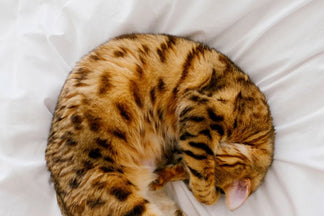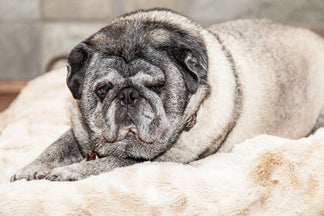Dr. Ernie Ward and The Association for Pet Obesity Prevention (APOP) recently released the 2013 results of their pet obesity survey. The study, conducted in the fall of 2013, shows no real improvement since 2011 in the obesity rates for dogs or cats.
Overweight or obese dogs make up 52.6% of all dogs in the U.S.. It is even worse for cats, with 57.6 % of cats being reported as fat.
Pet Obesity Statistics over the past Three Years
We gathered the data from the past three years and as you can see, there has been only small improvements over time. It appears that there is a slight trend in the right direction as dogs seem to be moving from being obese to overweight. As you can see in the table below, in 2011, 21.5 of all dogs were obese and in 2013, 16.7% were reported as such. This drop is almost exactly offset by a gain in the percentage of dogs who are now classified as being overweight.
For cats, the story is not as good - the table shows that the percentage of cats that are overweight or obese was 2.6% greater in 2013 than in 2011.
|
Pet Obesity Statistics, 2011-2013 |
|||
|
Dogs |
2011 |
2012 |
2013 |
|
Overweight or obese |
53.0% |
52.5% |
52.6% |
|
Overweight |
31.5% |
36.8% |
35.9% |
|
Obese |
21.5% |
15.7% |
16.7% |
|
Cats |
|||
|
Overweight or obese |
55.0% |
58.3% |
57.6% |
|
Overweight |
30.0% |
39.5% |
30.2% |
|
Obese |
25.0% |
18.8% |
27.4% |
|
Source: Association for Pet Obesity Prevention |
The APOP Fat Gap
Disturbingly, according to the survey, among all pets that veterinarians ultimately classified as obese, 93 percent of dog owners and 88 percent of cat owners initially thought their pet was in the normal weight range. APOP refers to this disparity as the “fat gap.”
Even worse APOP reported that 72% of pet owners believe that obesity causes a decreased lifespan in pets. Yes, almost 3 out of 4 pet owners know that having a fat pet will decrease the pet’s lifespan, yet, more than half of dogs and cats are overweight or obese!


 Health and Fitness
Health and Fitness
 Health and Fitness
Health and Fitness
 Health and Fitness
Health and Fitness
